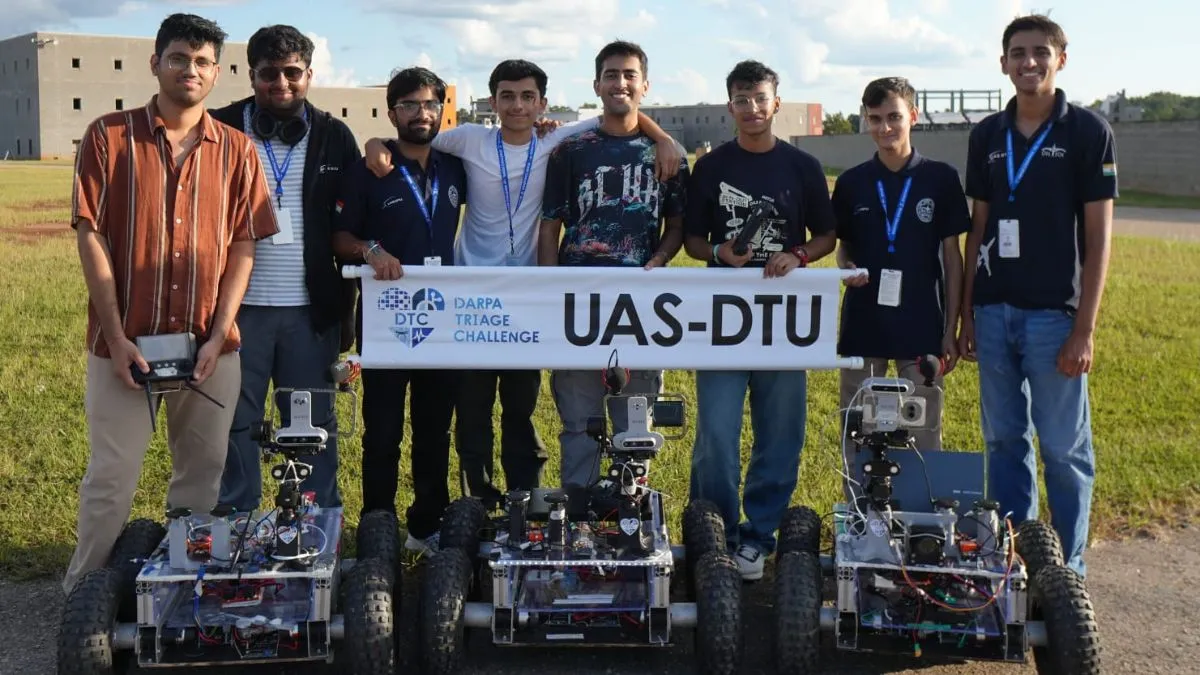- By Kamakshi Bishnoi
- Wed, 15 Oct 2025 09:47 PM (IST)
- Source:Jagran News Network
In a remarkable innovation for disaster management, students of Delhi Technological University (DTU) have developed an advanced robotic rover and drone system capable of conducting rapid medical assessments of injured persons during mass casualty situations such as wars, earthquakes, or major accidents.
The system, designed by students from DTU’s Unmanned Aerial System (UAS) unit, can identify injured individuals, assess their condition, and classify them as critical, serious, or stable, all within minutes. The rover collects vital information such as respiratory rate, blood flow, responsiveness, and the extent of injuries, even in low light or smoky conditions.
During disasters, the drone will map the affected area and locate the injured from the sky, transmitting their coordinates to the rover. The robotic rover will then reach the victims, interact with those who can speak, and send real-time medical reports to doctors. The system uses an advanced deep learning model and is equipped with sensors like an RGB camera, Lidar, infrared, and radar to detect vital signs and movement.
This innovation has already gained international recognition, securing second place and a USD 150,000 (Rs 1.32 crore) prize in a global research competition organised by the US Defence Advanced Research Projects Agency (DARPA). The achievement is being hailed as a significant milestone for Indian engineering innovation.
According to Chirag Sehgal, head of the research team, the rover can communicate with an injured person and send their medical report to a doctor in just one minute, helping to drastically reduce response time in emergencies. The rover is also designed to function at night, ensuring continuous rescue operations.
In a recent mock drill in Perry, Georgia, USA, three rovers successfully navigated a 30x30 metre crash site with 25-30 casualties, conducting medical assessments at a rate of one injured person per minute.
The Indian Army has also reviewed and appreciated the innovation, and the patenting process for the system is currently underway. The 25-member student team includes Aditya Bhatia, Aditya Vikram Singh, Akshat Kaushal, Arnav Joshi, Anuj, Gunmay Jhingran, Nishant Chandana, Saksham Jain, and Updesh Dua, under the guidance of Professor H Indu and Dr Chhavi Dhiman.
Praising the development, Prof Santosh Kumar, former Executive Director of the National Institute of Disaster Management, said, “The triage robotics system developed by these students is extremely useful for India’s disaster management and emergency medical response framework. It can accelerate life-saving decisions during the golden hours after a disaster while reducing human risk. Such autonomous triage robots can revolutionise the way we locate and prioritise victims in complex terrains or hazardous areas.”

